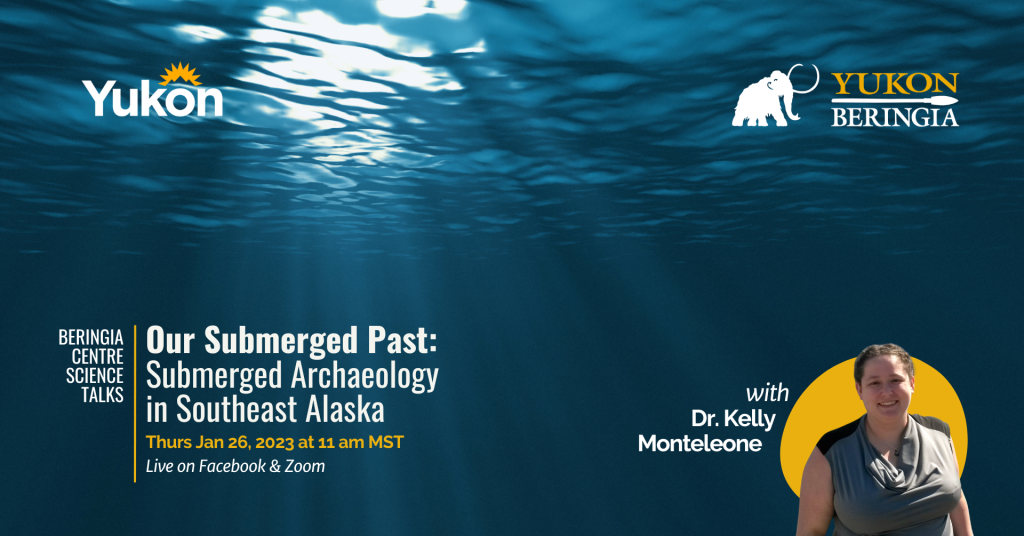posted January 18, 2023
Our Submerged Past: Submerged Archaeology in Southeast Alaska
Are you curious about archaeology, natural science, or palaeontology? You’re in luck! Beringia Centre Science Talks are back for a 4th season.
This week, we're speaking with Dr. Kelly Monteleone about underwater archaeology in Southeast Alaska.
Southeast Alaska, specifically the continental shelf and islands on the west side of Prince of Wales Island, had a drastic sea-level rise at the end of the Last Pleistocene/Early Holocene. There was up to 176 m of sea-level rise, from -165 m to 11 m, in approximately 7000 years: an enormous change in a relatively short time. This submerged coastline would have been the along the route for early peoples journeying to the Americas. This research develops and tests an archaeological land-use model designed to identify areas of high archeological potential on the continental shelf of Southeast Alaska, specifically the Alexander Archipelago.
The Alexander Archipelago is an island chain located in the northern section of the Northwest Coast of North America. A stone fish trap has been confirmed on the seafloor at 52 m (currently estimated to be 11,100 cal BP) and demonstrates that early land-use locations (archaeological sites) are preserved on the continental shelf, supporting the coastal migration or kelp highway hypothesis. The Shakan Bay trap may be one of the world’s oldest dated and confirmed weirs. The confirmation of this side-scan sonar feature can provide confirmation of other side-scan anomalies that are thought to be stone fishing structures.
Want to learn more about Dr. Monteleone and her work?Visit her ResearchGate or her Twitter.

